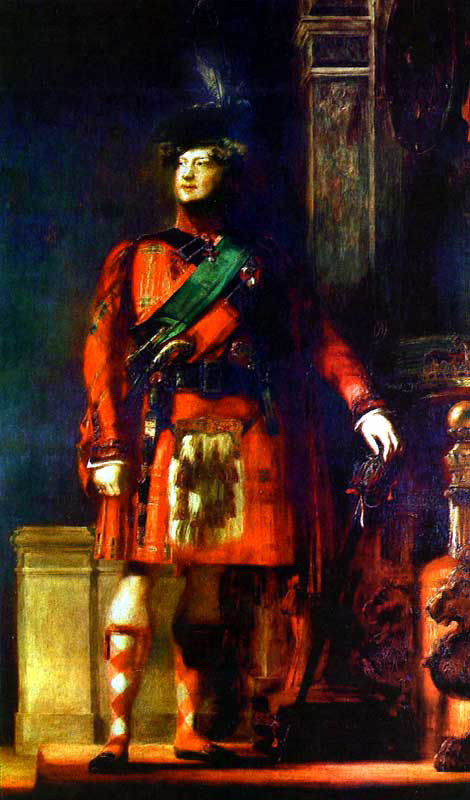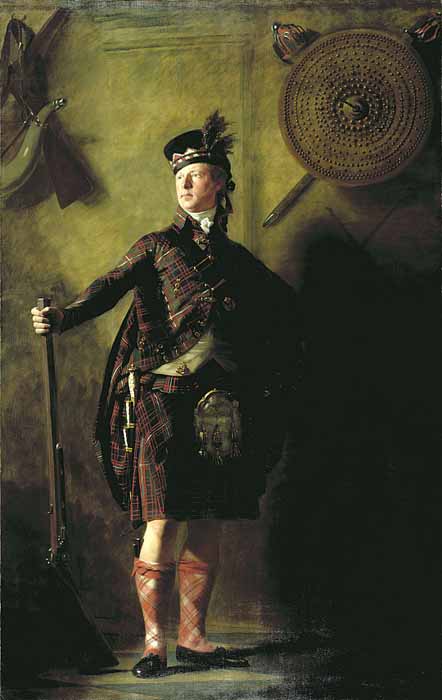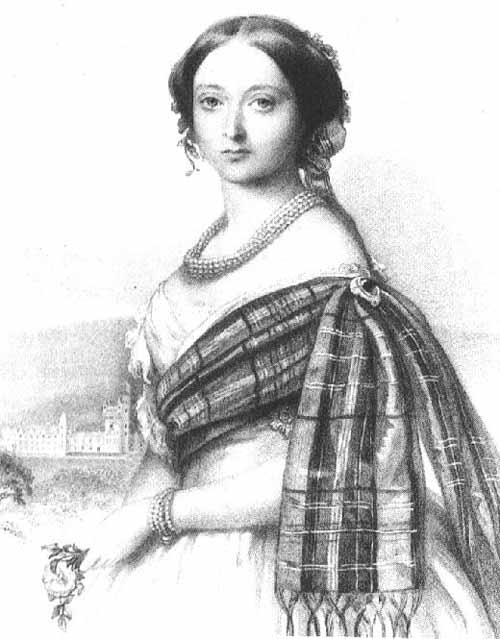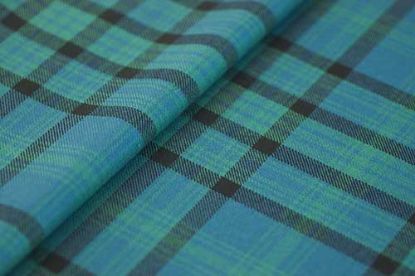Over the subsequent thirty six years only a few minor infringements of the rule occurred. The Highlands were exhausted; the Chiefs who had been “out in the '45” were in exile. All that the inhabitants of the far flung glens really wanted was a return to peaceful normality, even if it meant being in denial of their cultural identity.
Or perhaps they knew that common sense would ultimately prevail. By 1782, the Act of Proscription was seen for what it was, absurd and unenforceable, and, that same year, the Marquis of Graham (who in 1790 became 3rd Duke of Montrose), backed up by members of the Highland Society of London which had been founded four years earlier, successfully petitioned to have the legislation repealed.
Meanwhile, Lowland Scotland was at the peak of the period known as The Enlightenment and, despite its leanings towards ground-breaking innovation and science, was undergoing a wave of nostalgia. Ossian, a collection of allegedly ancient Gaelic ballads translated by James Macpherson, himself a Scottish poet, captured the popular imagination with echoes of a noble and romantic past. Around 1805, Walter Scott, an Edinburgh-based lawyer, began publishing a series of epic poems and novels, notably The Lady of the Lake (1810), the Lord of the Isles (1815), and Rob Roy (1817), all of which unashamedly plundered Scotland's rich seam of folk lore and legend.
 |
George IV in Tartan Kilt and Doublet, 1829, Sir David Wilkie |
In 1822, two years after he had ascended the British throne, His Majesty King George IV was persuaded to pay an official visit to his northern Capital. In so doing, he became the first reigning British monarch to set foot on Scottish soil for 170 years.
And needless to say, all of Scotland rose to the occasion, harnessing the talents of the recently knighted Sir Walter and his close friend, Lieutenant Colonel David Stewart of Garth, to put on a show the like of which had never been seen before or since.
Anyone who considered themselves to be anyone in Scotland's hierarchy rallied to see and be seen, the King's visit culminating with a grand levée at the Palace of Holyroodhouse , described by Sir Walter's biographer son-in-law John Gibson Lockhart, with just the tiniest touch of cynicism, as “Celtic hallucination.” To tap into the mode, Highland chiefs and landowners had for months prior to the event been kitting themselves out in tartan attire; even Lowland families, who would have never previously contemplated such a thing, succumbed to tartan designs supplied by their tailors and dressmakers. As a result, Lowland families emerged as “Lowland Clans.”
 |
Colonel Alastair Ranaldson Macdonell of Glengarry, Sir Henry Raeburn, exhibited Royal Academy in London, 1812 |
Genuine Highland Clan Chiefs, such as The Macnab and Colonel Alastair MacDonell of Glengarry, went so far as to have themselves immortalised in life size tartan oil paintings by Sir Henry Raeburn. When it came to the portly King himself, he was persuaded to envelop himself in a voluminous kilt of the Royal Stewart tartan worn over flesh coloured tights. So as not to be upstaged, a diplomatically slimmed down depiction of His Majesty has been passed down to us by the court painter Sir David Wilkie.
In an age of masked balls and Regency pleasure palaces, it was little more than pure and joyful fancy dress, but the fact remains that Scottish society would never be the same again. With the Royal Visit widely hailed as a success of epic proportions, it was inevitable that somebody would sooner or later attempt to reinvent the tartan card. When this occurred, however, it took everyone by surprise.
In 1829, two brothers calling themselves Sobieski Stuart Hay, tenants of the 14th Lord Lovat on an island on the Beauly River near Inverness, publicly announced that they had in their possession the Cromarty Manuscript, a book of tartan designs published in 1721, which had previously belonged to the Scots College at Douai in France.
So who exactly were these Sobieski Stuart Hay brothers? In the telling, their story turns out to be as bizarre as their eccentricities. Their father, they asserted, was the legitimate son of Prince Charles Edward Stuart by his wife Princess Louisa of Stolberg, who, in order to protect him from being kidnapped by followers of the House of Hanover, was secretly adopted by Admiral John Carter Allen, RN. Although no verifiable evidence existed to support such a pretentious claim, it has to be noted that both brothers were readily accepted into the upper echelons of both Highland and Lowland society.
In 1842, John and Charles Sobieski Stuart published Vestiarium Scoticum which carried a quantity of colour illustrations said to be based on the original and authentic designs for the clan tartans of Scottish families. Widely denounced as a forgery at the time, most of the designs featured in this volume continue to be accepted as official Clan Tartans.
 |
Queen Victoria, wearing tartan sash at Balmoral, lithograph c. 1850 |
And that same year, the young Queen Victoria, accompanied by her husband, visited Scotland for the first time. At Blair Atholl, they witnessed a display of Scottish Country Dancing and tasted whisky. As guests of the Marquis of Breadalbane, they were welcomed at Taymouth Castle in Perthshire by hundreds of bonfires blazing on the surrounding hillsides. They were utterly entranced by what they saw and, five years later, purchased the 10,000 acre estate of Balmoral, later adding on the further 14,000 acres of Abergeldie.
Victoria and her husband enthusiastically embraced everything with even the remotest resonance of Scotland's past, and, before long, Prince Albert had personally designed a Balmoral tartan for exclusive family use. For her part, the Queen commissioned kilted portraits of several of her Highland retainers. Today, the British Royal Family has a choice of nineteen of their own exclusive tartans to choose from.
























